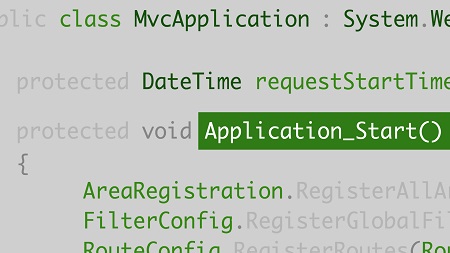
English | MP4 | AVC 1280×720 | AAC 48KHz 2ch | 2h 15m | 1.36 GB
Learn the architecture of the MVC framework by exploring the life cycle of an HTTP request as it travels through the ASP.NET MVC framework. This course educates developers about the major steps in the request life cycle, as well as how to extend and customize them when appropriate. Instead of focusing on MVC coding and how to build applications, this course dives into the relationships between the components that comprise the request pipeline. The inner workings of the MVC framework are discussed where applicable, such as controller factories, dependency resolvers, and result execution.
Topics include:
- Fundamentals of the request life cycle
- Designing and implementing HTTP modules and handlers
- Choosing between handlers and modules
- Understanding route handlers
- Configuring convention-based routing
- ASP.NET MVC attribute routing
- Creating a custom controller factory
- Defining a custom dependency resolver
- Creating a custom view engine
Table of Contents
Introduction
1 Welcome
2 What you should know
3 Sample application introduction
The Application and Request Life Cycle
4 Introduction to the request life cycle
5 Explore global application events
6 Initialize code before application start
7 Examine HTTP request life cycle events
8 Subscribe to HTTP application events
Design and Implement HTTP Modules and Handlers
9 HTTP module overview
10 Build a custom request processing module
11 Introduction to HTTP handlers
12 Implement a custom HTTP handler
13 Choose between handlers and modules
The ASP.NET MVC Routing System
14 Introduction to routing
15 URL routing module overview
16 Understand route handlers
17 Configure convention-based routing
18 Explore attribute routing
Controllers and the Request Life Cycle
19 Controller basics
20 Understand controller initialization
21 Create a custom controller factory
22 Explore the role of dependency resolvers
23 Define a custom dependency resolver
The Action Method Execution Process
24 Introduction to action invocation
25 Understand action method selection
26 Work with action selector attributes
27 Apply authentication and authorization filters
28 Explore the model binding feature
29 Action execution with action filters
30 Implement a custom action filter
Result Execution and the View Engine
31 Overview of action result execution
32 Explore action result types
33 View initialization and rendering
34 Create a custom view engine
Conclusion
35 Next steps
Resolve the captcha to access the links!